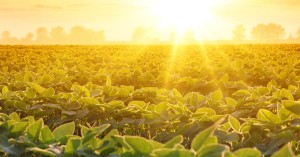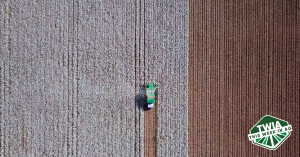New Year’s babies bring a renewed spirit of hope to those whose lives they touch. On January 1, 1865, a baby born in Diamond, Missouri, not only brought hope, but salvation to US agriculture. His name was George Washington Carver.
Many know him as the peanut man. But his contributions far outweighed any single crop. What we refer to today as regenerative agriculture and hybrid plant breeding, Dr. Carver successfully implemented over a century and a half ago. Simply stated, he was a giant of agriculture. Yet his accomplishments were only paled by what he had to overcome.
Just weeks after his birth, he was kidnapped and sold into slavery. Due to his frail childhood health, he was unable to perform labor-intensive work in the fields, so he was assigned to household and gardening chores. That’s where he discovered a love of plants, earning him the nickname “the plant doctor.” This passion led him to what would become Iowa State University, where he not only became the first black student, but first black teacher. Dr. Carver was invited by Booker T. Washington to join the faculty at Tuskegee University in Alabama, where he remained for 47 years.
In the 1890s, Southern soils were being depleted due to continuously growing cotton. Dr. Carver introduced the concept of crop rotation – growing sweet potatoes, soybeans and most famously, peanuts, the year following cotton – to affordably restore nitrogen, other nutrients, and balance to the soil, while reducing pest and disease pressure. This improved crop yields, restored profitability, and saved the Southern farm economy from the brink of collapse.
Of course, to economically grow a new crop, you need viable markets for it. Dr. Carver discovered over 300 new uses for peanuts in food, cosmetic, fuel, dye and industrial products. This made the legume more economically sustainable and an excellent rotation partner. He also discovered over 100 uses for sweet potatoes.
As a professor at Tuskegee University, he established the cooperative extension service in Alabama; a service which to this day serves as a research and communications hub for farmers throughout the South. He took his teachings to impoverished rural communities by equipping a mule-drawn “moving school”, called a Jesup Agricultural Wagon, stocked with equipment, seeds and educational materials. Upon his passing in 1943, President Franklin D. Roosevelt proclaimed, “All mankind are the beneficiaries of his discoveries in the field of agricultural chemistry.”
On my Mount Rushmore of Agriculture, George Washington Carver would have his likeness chiseled on it, alongside the likes of Norman Borlaug, Henry A. Wallace and John Deere.
Related Posts

This Week in Ag #51
Back in the mid-1980s, this then-high school student attended a farmer meeting with dad. One of the speakers was a commodities advisor. He playfully asked the attendees what their target price was for their crops. He further inquired, “How many of you are still holding out for the return of $12 soybeans?” The sheepish looks

Unique Water Towers That You Should See
By Jael Batty From globes to lighthouses, historical and refurbished water towers around the world are eye-catching landmarks.

This Week in Ag #86
Yesterday was #WorldCottonDay. That’s a fitting title, considering how creating the world’s most popular fabric is truly a world endeavor. Cotton is a crop mostly grown in Asia and the Americas, whose end products are mostly designed in Europe and mostly manufactured in Asia, and largely consumed in the world’s wealthiest countries (the USA accounts

